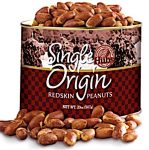Down on Cornman Farms
Cornman Farms is getting ready for the upcoming growing season and there’s a lot going on.
Yesterday, we were very pleased to welcome students from Dexter Community Schools. The students were given a tour of the farm to learn more various aspects of farm life. At various stations, Cornman staff talked to students about the feed and care of animals, growing and nurturing plants and crops, and how bees can help a farm be healthy.
Chef Alex of the Zingerman’s Roadhouse welcomes everyone and talks about all the things students will see as they tour the farm.
Another Cornman Farms resident extends the hoof of welcome.
At this station, Kelly gives a milking demonstration on Mrs. Tiller, an Alpine goat raised on the farm. Mrs. Tiller was patient, occasionally commenting “baaaaa!” Kelly also talked about some of the other animals in the barn, including goats, sheep, pigs, and chickens.
At our next station, Carl talked about the bees kept on the farm. He talked about how a bee colony is organized and what tasks each type of bee will perform. He opened an empty hive to show us how it’s constructed to make harvesting fresh honey easy for the beekeepers, while not disturbing the colony too much. Carl demonstrated how a smoker is used to calm the bees, and why he sometimes uses his protective bee suit. Finally, he showed students the glass-enclosed hive so all could see what bees look like inside their hive. Bees are very good for a farm, helping the pollination process and providing fresh, delicious honey.
Next up, Mark talked about the farm’s planting fields, and the very important role that compost plays in enriching the soil at Cornman. Compostable materials are collected from Zingerman’s businesses and worked into the compost pile at the farm.
It’s big and ripe with the smell of decomposing vegetable food waste, field waste from the farm, and compostable paper and packaging products. Basically, anything and everything that can be composted is thrown into the pile. The compost breaks it all down into a vitamin-rich mixture that feeds the crops at the farm, helping them grow strong and healthy. The process generally takes about a year, but the resulting compost helps keep the soil at Cornman continually fertile and suitable for planting.
Next, Mark showed us the compost in action. This patch of green onions was grown in soil enriched with compost from the farm. Mark invited students to run their hands through the soil and smell it. Mark pointed out that, after a year, the compost just smelled like good soil. All the stinky things in the compost had done their job and these happy onions were the result.
Here’s the field hothouse where young tomato and pepper plants are nurtured in a warm environment to help them get a strong start before moving into the fields. Peppers and tomatoes originated in warmer climates than Michigan, so it’s important that they be kept warm enough when they’re still young. Mark asked the students what might be added to their soil to help them grow better? Compost!
On the way to the next station, more Cornman residents took time out of their busy schedule to say hello!
Here, Chef Alex talked about how the Cornman cows are cared for. Students learned that because cows main diet is grass, they require four stomachs to fully digest their food. As the cows graze, they chew the grass down until it’s very short. After a while, the cows have to be moved to another meadow for fresh food, but also to allow their previous field time for the grass to replenish itself. In drier seasons, the grass doesn’t grow quickly enough and the cows’ diet must be supplemented with grain so they get enough to eat.
After their lunch, the cows relax in the shade.
At the next station, Allison talks about how Cornman Farms plans what crops to grow in the coming year. The farm draws maps showing various crops, how much land they’ll need, and where they’ll be located on the farm. The farm uses this map to plan how many seeds they’ll need to order for the coming year. Each spring, they germinate their seeds into seedlings for planting. Here, Alison shows us a seedling tray used to start the plants.
After the seeds are planted in the trays, the trays go into the germination room where they receive lots of light and heat. The seeds need to be kept warm and the light stimulates the young shoots to travel up through the soil to the light source. The seedlings stay here for a few days after sprouting to gain strength.
When they’re strong enough, the seedlings are moved into the greenhouse. The greenhouse has lots of windows to give the plants sufficient light. It’s kept very warm to help the fragile young plants grow big enough to move outside when the time comes. The greenhouse is empty now because it’s planting season and the young plants have been moved out to the fields.
When we say the greenhouse is warm, we mean it!
The Cornman Farms staff and volunteers would like to thank all of our young guests for coming our to visit us!





















Zingerman’s Art for Sale